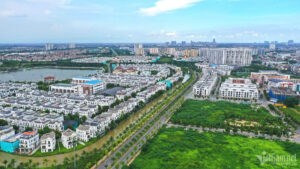SINGAPORE: There has been much excitement about the proposed Johor-Singapore Special Economic Zone (SEZ) since a Memorandum of Understanding was signed between Singapore and Malaysia in January.
During his introductory trip to Malaysia on Wednesday (Jun 12), new Singapore Prime Minister Lawrence Wong highlighted the potential of the SEZ, saying that it could unlock massive economic benefits for both countries.
“People harp a lot on the competition (between our two economies), but really, we are complementing one another,” said Mr Wong.
His counterpart, Mr Anwar Ibrahim, said that plans for the zone are very close to being finalised.
Touted as a potential “Shenzhen of Southeast Asia”, details of the geographical scope of the SEZ in the southern Malaysian state are still being finalised, as are the specific economic sectors. A series of meetings are scheduled to take place this month between the Malaysia and Singapore working groups, which could provide more clarity. A full-fledged agreement is expected to be signed in September.
When Malaysia and Singapore announced plans to work on the SEZ, questions were raised as to the types of industries and sectors that would dominate and thrive in this new zone. Johor is proposing 16 economic sectors as part of the zone, including electrical and electronics, medical, aviation and manufacturing.
During a Johor state assembly sitting last month, chief minister Onn Hafiz Ghazi also said that the state government has proposed the zone span across six districts – Johor Bahru, Iskandar Puteri, Pasir Gudang, Pontian, Kulai and Kota Tinggi – encompassing a land mass of 3,505 sq km. This is more than four times the size of Singapore, and nearly double the size of Shenzhen.
Both Shenzhen and Johor have abundant natural resources and land, as well as access to a young and growing workforce. Both are also strategically located, being close to major economic hubs – Hong Kong in Shenzhen’s case, and Singapore for Johor. With key parallels between Johor and Shenzhen, and with the development of the SEZ, it is possible for Johor to emulate Shenzhen’s success in the near future.
In 2023, Malaysia’s electrical and electronics sector secured RM85.4 billion (US$18.1 billion) in approved investments, nearly three times the amount in 2022. Meanwhile, Singapore’s electronics cluster accounted for 24.2 per cent of the country’s total fixed asset investments at S$3.1 billion (US$2.3 billion) last year.
Additionally, with Penang already established as a semiconductor hub, the SEZ could further cement Malaysia’s reputation as a leader in the electrical and electronics sector.
Penang, dubbed the Silicon Valley of the East, has a strong electrical and electronics ecosystem with a longstanding presence in chip assembly, packaging and testing. However, it is not uncommon for skilled workers such as engineers to choose to pursue similar jobs in Singapore for better employment packages.
Last year, Malaysia’s then human resources minister V Sivakumar, said that as of 2022, 1.13 million out of 1.86 million Malaysians who migrated abroad were living in Singapore.
Once the SEZ is established, it could help to attract skilled talent to the hub, thus retaining talent within Malaysia. This can be supported by plans for a passport-free QR code clearance on both sides, facilitating faster clearance of people at land checkpoints.
As supply chains become more integrated between Singapore and Johor, Malaysia could retain and grow its talent pool, depending on how companies set up their operations within the SEZ.
Source : CNA




